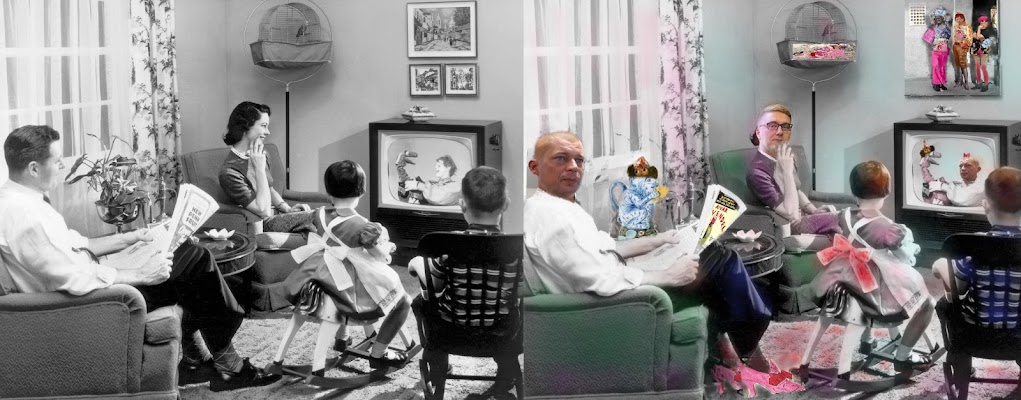M_DU_034 THE TELEVISION, ONCE A LUXURY, WAS NOW AN INTEGRAL PART OF EVERYDAY LIFE
5 h
·
The 1950s marked a pivotal moment in history when television became the centerpiece of households, revolutionizing entertainment and communication. It was a time when families gathered around their living room sets, eager to be entertained and informed. A snapshot from this era captures a typical scene: a family sitting together, captivated by a children's television program. The father, momentarily setting aside his newspaper, watches with interest as a clown brings a dinosaur hand puppet to life, drawing both laughter and wonder from the young viewers.
Television in the 1950s was not just a source of entertainment, but a cultural shift. Shows like the one in the photograph, with their playful clowns and imaginative characters, helped shape the childhood experiences of an entire generation. The era saw an explosion of creativity in children's programming, while also bringing families closer together in an increasingly fast-paced world. For many, the living room became a space for shared experiences, where laughter echoed from the TV screen and the joy of family time took center stage.
This moment in time also highlighted the growing influence of television on society. As more families acquired TVs, advertisers and content creators began to recognize the medium’s vast potential to shape public opinion and culture. The 1950s would go on to be known as the golden age of television, setting the stage for the decades of programming, commercials, and broadcasts that would continue to transform the way people experienced the world. The television, once a luxury, was now an integral part of everyday life. Kuva vähem



Kommentaarid
Postita kommentaar